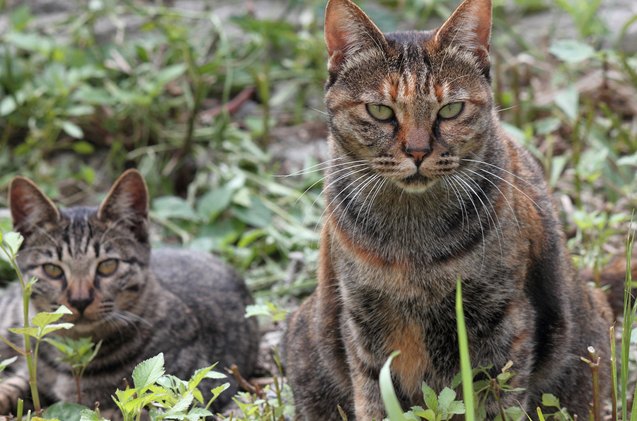Australia’s Feral Cats Are The Cause Of Mass Mammal Extinction

Remember high school biology and the term “bio-diversity”. In lay-person talk, it means the ability of different natural communities to live in harmony with one another. Jump the pond to Australia and you’ll find well, what would you call the opposite of bio-diversity? Mayhem? The continent is experiencing a feral cat population that has reached epic proportions and threatens to re-write their ecological future.
I know what we’re all thinking! Let’s pull together and organize a mass pet drive to find homes for the unloved felines. We can involve social media, go global, maybe include an incentive of some sort, right? Wrong! We’re talking 15-23 million feral cats. Not stray, but wild… and hungry! In fact, if you tweeted something out it would probably be tackled mid-air and eaten! Yes, it is estimated the wild cats kill and consume 75 million native animals every night and threaten the future of mammals, reptiles, birds and insects in the region.
Related: TNR: What is It And How Does It Help Feral Cats?
It’s so bad that the Federal Environment Minister wants all states, territories and other stakeholders to sign on to a 10-year plan to eradicate the feral cat and promises to host a national threatened species summit before July. He’s not saying zero feral cats, but a sufficient cull to safeguard the native wildlife population.
So how did this happen? More specifically, how did it go unchecked for so long?
Scientists think measures taken to control the European Red fox population opened the door to widespread feral cats. In the mid-’90s aggressive steps were taken to reduce the number of red-headed predators and with the reduction in fox came an immediate resurgence of native birds and mammals, including some endangered species. Success, right? Not so fast. In the early 2000s, spectacular crashes in wildlife populations were recorded. Truth is, the foxes were really good at controlling cats and without their predatory activity the cat population was flourishing.
Related: Reasons Why You Should Spay Or Neuter Your Cat
Is it just me, or does that childhood rant.. “… and this is the cat that ate the rat that lived in the house that Jack built” keep going through your head too?
In the U.S. organizations such as TNR (Trap, Neuter, Return) exist and will come in to impacted areas, set up traps to capture feral cats bring them to a veterinarian to be spayed/neutered and then ideally adopted, fostered or returned to their habitat. But this is done small scale and therefore the impact greater and the results sustainable. Not so when you’re talking millions of cats.
So Australia’s dilemma has drawn various solutions that range from ensuring domestic animals are spayed and neutered (lest they be recruited into the feral population), hunting or baiting and killing the animals or even releasing predators into the mix – such as wild dingoes or Tasmanian devils (yes, they really do exist). The thinking is that the natural “cull” would help create a better functioning ecosystem.
Whatever is done, it will be aggressive, extreme and disturbing to most of us. For me, nothing works without an educational component. Teach the public to spot and report unusually frequent sightings of any type of animal and let’s monitor to ensure this type of sad and drastic measure is never repeated. In other words, let’s hope ten years from now we’re not hearing about an epidemic of Tasmanian devils wiping out the Australian wildlife population!
[Source: Vice]
Mary Simpson is a writer and communications professional from Port Credit, Ontario. A soft touch for anything stray, she shares her century home with an eclectic collection of rescues that include orange tabby Chico, tuxedo Simon, and jet black Owen. She enjoys running, politics, exploring the wine regions of Niagara and is an avid supporter of the “shop local” movement.

Sharing space with three seriously judgy Schnoodles and a feline who prefers to be left alone. #LivingMyBestLife
More by Mary Simpson
























